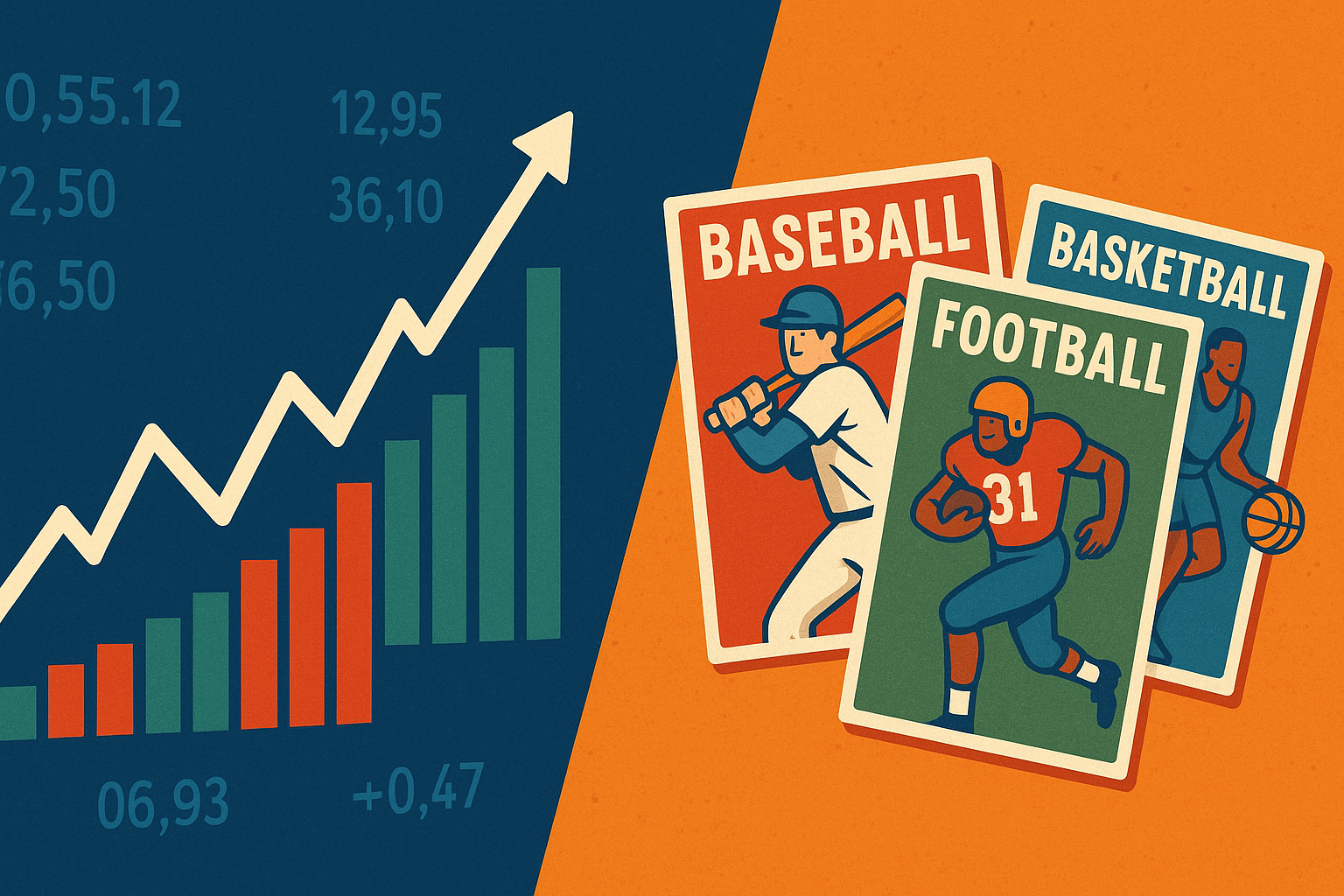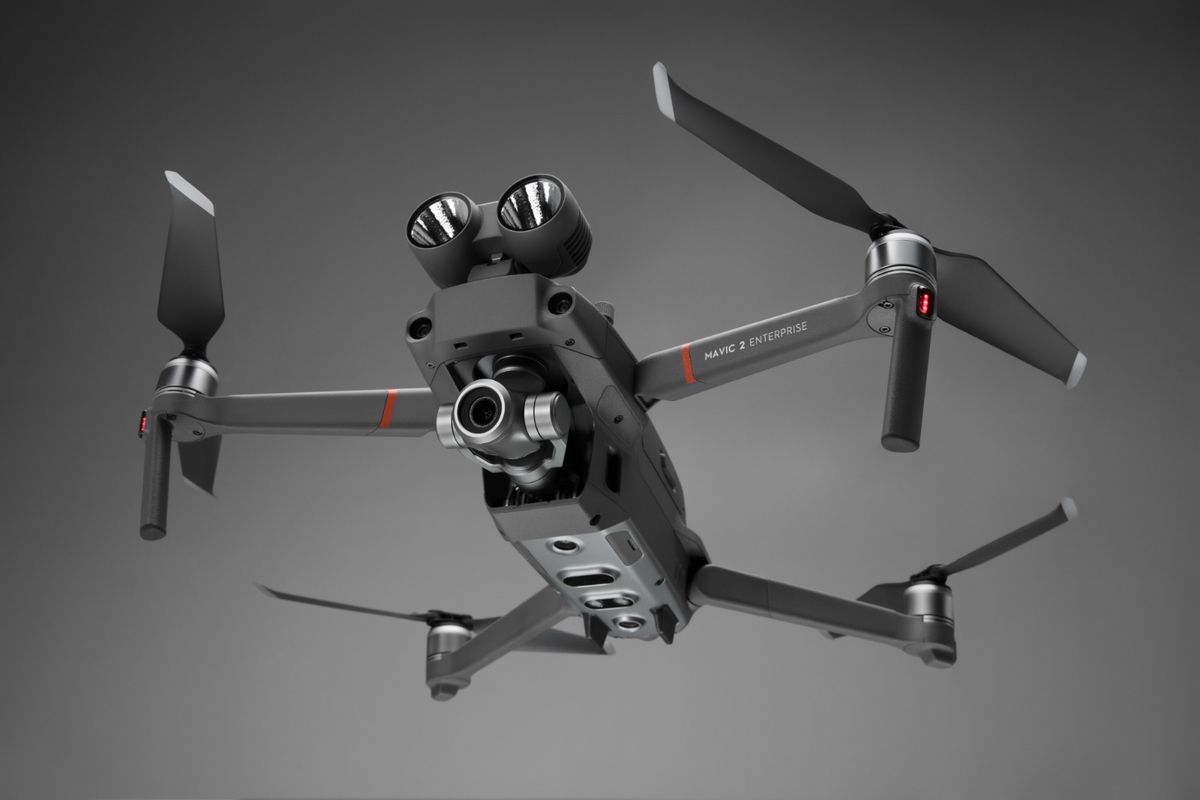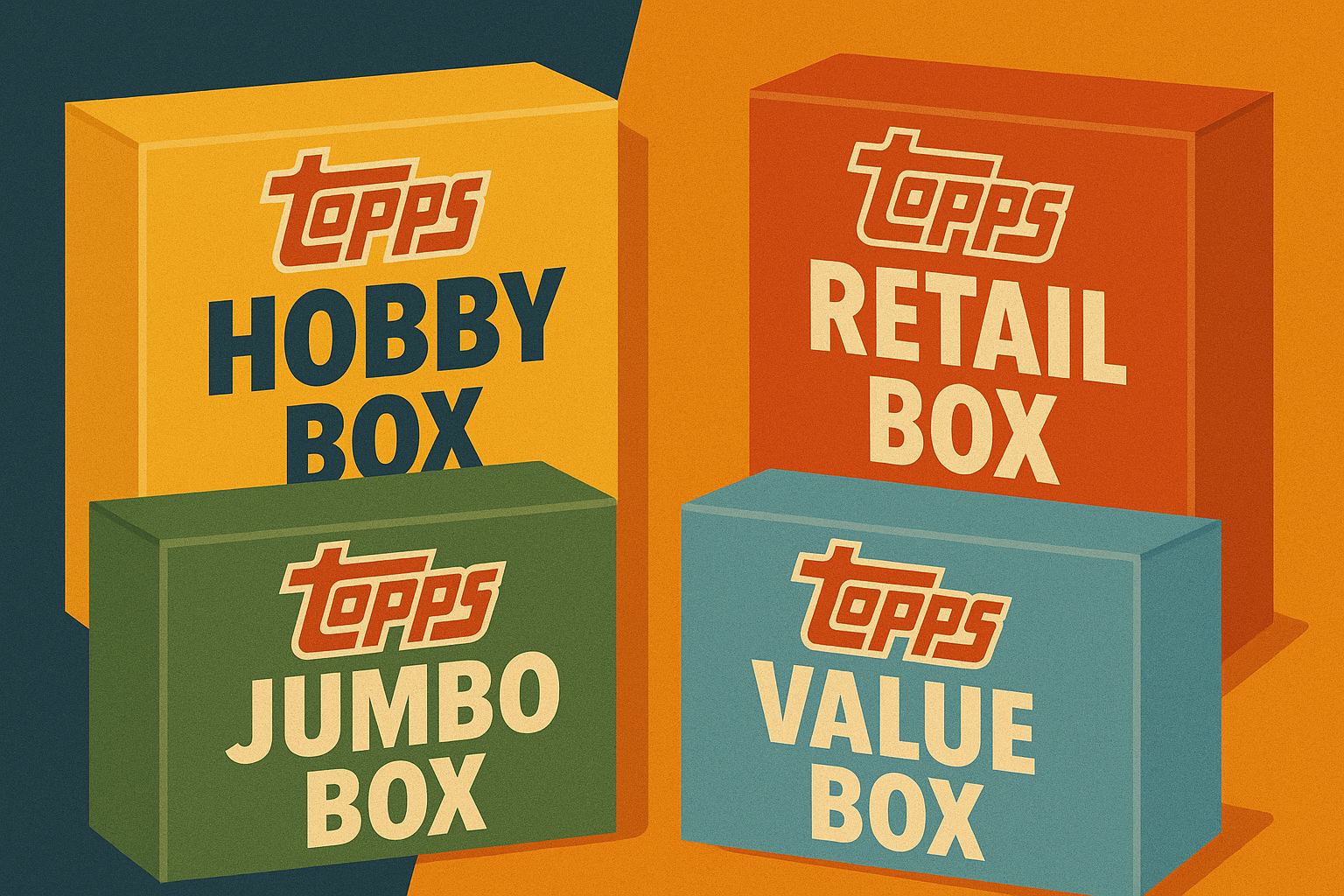Remember when your childhood baseball cards were worth more than your 401(k)? For a brief, shining moment between 2020 and 2022, that wasn’t just nostalgia talking—it was market reality. The parallel journeys of the stock market and sports card market from 2016 to 2024 tell a fascinating story about speculation, liquidity, and what happens when everyone becomes a day trader overnight.
By the Numbers: A Tale of Two Markets
Let’s start with the raw data. Between January 2016 and December 2024, the S&P 500 delivered a total return of approximately 180%, turning a $10,000 investment into about $28,000. Impressive by traditional standards. But certain sports cards? They turned that same $10,000 into $150,000 at their peak—before crashing back to earth.
The Pre-Pandemic Build-Up (2016-2019)
From 2016 to 2019, both markets showed steady, unremarkable growth. The S&P 500 climbed from around 2,000 to 3,200 points—a respectable 60% gain over four years. Meanwhile, the sports card market was experiencing its own quiet renaissance.
During this period:
- Stock Market: Fed by the Trump tax cuts, low interest rates, and strong corporate earnings, equities marched steadily higher with only minor corrections
- Card Market: Grading companies like PSA and BGS were processing cards at normal rates (10-15 business days), and a PSA 10 1986 Michael Jordan rookie card could be had for around $3,000-$5,000
- Key Metric: Monthly eBay sales of graded cards increased from $2 million to $8 million
The groundwork for what was to come was being laid:
- Online marketplaces like COMC and PWCC were making card trading more accessible
- Social media was creating new communities of collectors
- Gary Vaynerchuk started evangelizing sports cards as alternative investments
- Breakers (people who open boxes and sell individual cards/teams) began streaming on social platforms
The Early Warning Signs
By late 2019, astute observers could see something shifting. PSA’s monthly submission volume had doubled year-over-year. Instagram accounts dedicated to showing off high-value cards were multiplying. And perhaps most tellingly, Wall Street types were starting to appear at card shows.
The Pandemic Boom (2020-2021)
Then COVID-19 hit, and everything changed. With stimulus checks in hand, nowhere to go, and trading apps on every phone, Americans discovered two things: day trading and their old card collections.
The stock market’s recovery from its March 2020 crash was swift and shocking. The S&P 500 not only recovered but soared to new heights, reaching 4,700 by the end of 2021—a gain of nearly 100% from its pandemic low.
But the sports card market? It went absolutely nuclear:
- That $5,000 Jordan rookie? It sold for $738,000 in January 2021
- Modern cards of players like Luka Dončić and Zion Williamson were selling for five figures before they’d completed their rookie seasons
- PSA shut down most submission levels due to a backlog of over 10 million cards
- Card shops that had been struggling for years suddenly had lines around the block
- Target and Walmart had to institute purchase limits, then stopped selling cards entirely due to parking lot fights
The Anatomy of a Mania
What drove this insanity? Several factors converged:
- The Perfect Storm of Liquidity: Between stimulus checks, enhanced unemployment benefits, and nowhere to spend money on experiences, Americans were flush with cash
- The Gamification of Everything: If you could trade stocks on your phone, why not cards?
- Social Media Amplification: Every record sale was broadcast across Twitter, Instagram, and TikTok within minutes
- FOMO on Steroids: Watching your neighbor flip a Zion rookie for 10x returns in three months created intense pressure to get in
- New Market Infrastructure: Companies like PWCC Marketplace, Alt, and Collectable created fractional ownership platforms
Peak Insanity: Notable Sales
The period from December 2020 to May 2021 saw some truly mind-boggling transactions:
- January 2021: A Tom Brady rookie card sells for $1.32 million
- February 2021: A LeBron James rookie patch auto sells for $5.2 million
- April 2021: A 1952 Mickey Mantle sells for $5.2 million
- April 2021: Modern rookies of unproven players selling for $100,000+
The Great Divergence (2022-2024)
This is where the stories split dramatically. The stock market, despite inflation fears and rate hikes, managed a controlled descent in 2022 before recovering in 2023-2024. The S&P 500’s 2022 bear market was painful but orderly, dropping about 20% before stabilizing and eventually reaching new all-time highs by 2024.
The sports card market? It experienced something closer to a cliff dive:
- That record-breaking Jordan rookie? Back down to $200,000-$300,000 range
- Modern basketball cards lost 60-80% of their peak values
- Grading companies cleared their backlogs as submissions plummeted
- Many “investors” who entered during the boom quietly exited
- Breaking (box opening) viewership on platforms like Whatnot declined 70%
Case Studies in Collapse
Let’s look at specific examples:
Zion Williamson Prizm Silver Rookie PSA 10
- Peak (March 2021): $75,000
- Current (2024): $8,000-10,000
- Decline: -87%
Luka Dončić National Treasures RPA /99
- Peak (February 2021): $3.5 million
- Current (2024): $800,000-1 million
- Decline: -71%
Modern Football (2020 Justin Herbert Prizm)
- Peak (August 2021): $8,500
- Current (2024): $1,200
- Decline: -86%
Market Mechanics: Why the Difference?
What made these markets behave so differently? The answer lies in fundamental market structure.
Liquidity Comparison
Stock Market:
- Instant execution through electronic exchanges
- Tight bid-ask spreads (often pennies)
- Deep order books with millions of participants
- Settlement in T+2 days
Card Market:
- Sales through auctions (7-10 days) or marketplaces (variable)
- Wide bid-ask spreads (often 20-30%)
- Thin markets, especially for high-value cards
- Physical shipping required (3-7 days)
Market Infrastructure
Stock Market:
- SEC oversight and regulation
- Circuit breakers to prevent flash crashes
- Market makers providing liquidity
- Transparent pricing through exchanges
Card Market:
- No regulatory oversight
- No circuit breakers or trading halts
- Liquidity dependent on individual dealers/collectors
- Pricing opacity (auction houses take 20% fees)
Intrinsic Value Analysis
Stocks:
- Represent ownership in profit-generating businesses
- Pay dividends (S&P 500 yield ~1.5%)
- Can be valued using DCF, P/E ratios, etc.
- Companies can grow earnings over time
Cards:
- Pure collectibles with no cash flow
- Value based entirely on scarcity and demand
- No objective valuation methodology
- Condition degradation risk over time
The International Dimension
While our analysis has focused primarily on the U.S. market, the sports card bubble was truly a global phenomenon, with distinct regional variations that offer fascinating insights into market dynamics.
The Asian Market Explosion
The Asian market, particularly China and Japan, played a crucial but often overlooked role in the sports card boom. Chinese collectors, flush with cash from their own stock market gains, became major players in the high-end card market. The impact was particularly pronounced in basketball cards, where NBA popularity in China drove unprecedented demand.
Key developments included:
- WeChat Groups: Chinese collectors organized buying groups that could move markets overnight
- Cross-Border Arbitrage: Savvy traders exploited price differences between U.S. and Asian markets
- Payment Innovation: Alipay and WeChat Pay integration made international transactions seamless
- Cultural Preferences: Kobe Bryant cards commanded premiums of 50-100% in Asian markets due to his popularity
European Market Dynamics
Europe presented a different picture entirely. Soccer (football) cards dominated, with a completely separate ecosystem from American sports:
- Panini Monopoly: Unlike the U.S. market’s multiple manufacturers, Panini dominated European soccer cards
- Sticker Culture: The tradition of sticker albums created different collecting patterns
- Regulatory Differences: EU consumer protection laws provided more buyer safeguards
- Currency Effects: Euro/Dollar fluctuations added another layer of complexity for international traders
The Technology Revolution in Trading
The period from 2016-2024 saw unprecedented technological innovation in both markets, but the pace and impact differed dramatically.
Stock Market Technology Evolution
The stock market’s technological advancement was evolutionary:
- Commission-Free Trading: Robinhood’s 2013 launch reached critical mass by 2018
- Fractional Shares: Made expensive stocks accessible to small investors
- Options Trading: Simplified interfaces democratized complex derivatives
- Social Trading: Platforms like eToro introduced copy-trading features
The card market’s tech revolution was more revolutionary:
- Grading Apps: PSA and BGS launched AI-powered pre-grading apps
- Blockchain Authentication: Companies experimented with NFT authentication for physical cards
- Live Breaking Platforms: Whatnot and Loupe created TikTok-style card opening experiences
- Price Aggregators: Card Ladder and Market Movers provided real-time pricing across platforms
The Celebrity Effect
No discussion of the sports card bubble would be complete without examining the outsized role celebrities played in inflating—and deflating—the market.
The Influencer Industrial Complex
Unlike the stock market, where celebrity endorsements are heavily regulated, the card market became a Wild West of influencer marketing:
Gary Vaynerchuk emerged as the unofficial spokesman for card investing, with his every purchase moving markets. His YouTube videos routinely generated millions of views, and cards he mentioned could see immediate 50-100% price spikes.
Athletes Turned Collectors: Active players like Giannis Antetokounmpo and Patrick Mahomes began collecting, creating recursive loops where they collected their own cards, driving up prices.
Celebrity Collectors:
- Drake spending $200,000 on boxes during Instagram Live sessions
- Steve Aoki launching his own card trading platform
- Logan Paul wearing a PSA 10 Charizard as a necklace to WrestleMania
The Pump and Dump Problem
The unregulated nature of the card market made it ripe for manipulation:
- Coordinated Buying: Discord groups organizing purchases to drive up prices
- Fake Sales: Shill bidding and wash trading to create artificial price floors
- Exit Scams: Influencers promoting cards they were simultaneously selling
- FOMO Manufacturing: Limited “drops” creating artificial scarcity
Regulatory Responses and Legal Implications
The divergent regulatory treatment of these markets played a crucial role in their different trajectories.
Stock Market Regulation
The SEC’s robust framework provided multiple safeguards:
- Pattern Day Trader Rules: Limited excessive speculation by small accounts
- Market Manipulation Enforcement: High-profile cases against pump-and-dump schemes
- Broker Requirements: Know Your Customer (KYC) and suitability standards
- Tax Reporting: Automatic 1099 generation for all trades
Card Market: The Regulatory Vacuum
The card market operated in a regulatory grey area:
- No Federal Oversight: Neither the SEC nor CFTC claimed jurisdiction
- State-Level Patchwork: Some states treated cards as securities, others as collectibles
- Tax Confusion: Many traders unaware of tax obligations on card sales
- Consumer Protection Gaps: Limited recourse for fraud or manipulation
This regulatory vacuum had real consequences. The IRS launched investigations into high-volume traders who failed to report millions in card sales. Class action lawsuits emerged against grading companies for inconsistent standards. And the FBI investigated several high-profile authentication fraud cases.
The Role of Market Participants
Stock Market Participants (2016-2024)
- Institutional Investors: 80% of volume
- Retail Investors: 20% of volume (peaked at 25% in 2021)
- High-Frequency Traders: Providing liquidity
- Index Funds: Steady buyers regardless of price
Card Market Participants
Pre-2020:
- Traditional collectors: 70%
- Dealers/shops: 20%
- Investors: 10%
Peak Mania (2021):
- New “investors”: 50%
- Traditional collectors: 20%
- Dealers/shops: 15%
- Celebrities/influencers: 15%
Current (2024):
- Traditional collectors: 60%
- Dealers/shops: 25%
- Investors: 15%
Lessons from the Aftermath
The 2016-2024 period taught us several valuable lessons about market dynamics, speculation, and the nature of value.
1. Alternative Assets Aren’t Immune to Speculation
When mainstream markets seem “too high” or “manipulated,” retail investors often seek alternatives. But these alternatives can experience even more extreme bubbles due to their lack of infrastructure and oversight.
2. Accessibility Drives Volatility
The easier something is to trade, the more volatile it becomes when retail investors pile in. Robinhood made stock trading frictionless; Instagram and eBay did the same for cards.
3. Nostalgia Has a Price (But It’s Highly Variable)
The emotional connection to sports cards created a perfect storm when combined with excess liquidity. But emotion-driven markets are inherently unstable.
4. Market Structure Matters
The stock market’s recovery was aided by its robust infrastructure:
- The Fed could provide liquidity
- Circuit breakers prevented panic selling
- Institutional investors provided a floor
The card market had none of these stabilizers.
Both bubbles were supercharged by social media, but cards were particularly susceptible because:
- Visual medium (perfect for Instagram)
- Easy to understand (everyone knows Michael Jordan)
- Lottery ticket appeal (your childhood collection might be worth millions!)
The Psychology of Bubbles
Both markets exhibited classic bubble psychology, but the card market showed it in pure, undiluted form:
Stage 1 - Displacement: New market participants enter (2019-early 2020)
Stage 2 - Boom: Prices rise, attracting media attention (mid-2020)
Stage 3 - Euphoria: “This time is different” mentality (late 2020-early 2021)
Stage 4 - Profit-Taking: Smart money exits (mid-2021)
Stage 5 - Panic: Prices collapse as buyers disappear (late 2021-2022)
The Environmental and Social Impact
An often-overlooked aspect of both market booms was their environmental and social consequences.
Stock Market: The shift to electronic trading has made stock market transactions relatively low-impact:
- Digital transactions with minimal physical footprint
- Cloud-based infrastructure improving efficiency
- ESG investing becoming mainstream
Card Market: The environmental impact was substantial:
- Millions of cards shipped in plastic cases globally
- Grading companies using non-recyclable slabs
- Carbon footprint of shipping cards multiple times (to grading, to buyers)
- Overproduction as manufacturers chased demand
Social Consequences
The social impact of these bubbles extended far beyond financial losses:
Family Dynamics: Stories emerged of divorces caused by secret card spending, children’s college funds gambled on modern rookies, and family collections sold without permission.
Mental Health: The boom-bust cycle took a psychological toll:
- Addiction-like behaviors around breaking (opening packs)
- Depression following massive losses
- Social media-driven anxiety and FOMO
- Relationship strain from hidden financial losses
Community Changes: Local card shops, once community gathering places, transformed:
- Traditional collectors priced out
- Shops becoming investment firms
- Youth programs unable to afford cards for kids
- The death of “trading” as everything became about cash value
The Data Deep Dive: Alternative Metrics
Beyond headline prices, other metrics tell the story of these parallel bubbles:
Shipping and Logistics Data
The physical nature of cards created a fascinating logistics footprint:
- USPS reported a 400% increase in small package shipments to PSA’s California facility
- FedEx and UPS created dedicated routes for high-value card shipments
- Insurance claims for lost card packages increased 1,200% from 2019 to 2021
- New businesses emerged solely to handle card shipping logistics
Payment Processing Insights
Payment data revealed interesting patterns:
- Average transaction size on card platforms increased from $47 (2019) to $284 (2021)
- Buy Now, Pay Later usage for cards increased 800%
- Cryptocurrency payments for high-end cards grew from negligible to 15% of volume
- Chargebacks and payment disputes increased 500%
The Grading Economy: A Market Within a Market
Perhaps no aspect of the card bubble was more fascinating than the grading economy that emerged.
The Grading Explosion
Professional grading transformed from a niche service to a massive industry:
- PSA’s parent company went public via SPAC at a $4.7 billion valuation
- New grading companies launched weekly at the peak
- Grading backlogs reached 15+ months
- “Gem Rate” (percentage grading 10) became a key metric
Economic Impact
The grading boom created an entire ecosystem:
- Pre-Grading Services: Companies charging to evaluate cards before submission
- Grading Speculation: Buying raw cards hoping for high grades
- Crossover Services: Moving cards between grading companies
- Population Control: Collectors destroying lower grades to increase scarcity
The Grading Bubble Within the Bubble
Grading itself became speculative:
- Submission costs increased from $10 to $150+ for premium service
- Secondary market for grading vouchers
- AI companies claiming to predict grades
- Counterfeit slabs flooding the market
The International Money Flow
Following the money reveals how global these markets truly were:
Capital Flows in Stock Markets
Stock market flows remained relatively predictable:
- Foreign investment in U.S. equities steady at ~40% of market cap
- Sovereign wealth funds maintaining strategic allocations
- Cross-border flows following traditional patterns
Card Market Capital Migration
The card market saw unprecedented international capital movement:
- Middle Eastern sovereign funds quietly accumulating vintage cards
- Chinese capital fleeing domestic restrictions via collectibles
- Cryptocurrency wealth seeking physical assets
- Money laundering concerns raising regulatory eyebrows
Where Are We Now? (2024 Status)
As of 2024, these markets have found very different equilibriums.
Stock Market
- Near all-time highs
- Corporate earnings strong
- Fed policy supportive
- Institutional participation robust
- Retail participation normalized but healthy
Card Market
- 70-80% below peak prices for modern cards
- Vintage cards holding value better (down 40-50%)
- Grading companies operating normally
- Dealer inventories high
- Return to collector-driven market
The Next Bubble?
If history teaches us anything, it’s that the next bubble is already forming somewhere. Current candidates include:
- AI-related stocks (reminiscent of dot-com era)
- Vintage video games (following the card playbook)
- Alternative cryptocurrencies
- Contemporary art NFTs
The Recovery: Different Paths Forward
The recovery patterns of these two markets offer crucial insights into market resilience and structure.
Stock Market Recovery Mechanisms
The stock market’s recovery was supported by multiple mechanisms:
- Federal Reserve Policy: Quantitative easing and low rates
- Corporate Buybacks: Companies repurchasing $5.5 trillion in shares
- 401(k) Automatic Investing: Steady inflows regardless of volatility
- Algorithmic Trading: Providing liquidity and dampening volatility
Card Market: Finding a New Normal
The card market’s recovery has been more organic and painful:
- Return to Collectors: Investors fled, collectors remained
- Price Discovery: True market values emerging without speculation
- Quality Flight: Vintage and rare cards holding value better
- Market Consolidation: Weak dealers and platforms failing
Lessons for Future Bubbles
What can investors learn from comparing these two bubbles?
Universal Bubble Characteristics
Both markets exhibited classic signs:
- New Era Thinking: “This time is different”
- Leverage Explosion: Borrowed money chasing returns
- Retail Mania: Taxi drivers giving investment advice
- Media Saturation: Constant coverage driving FOMO
- Supply Response: Overproduction to meet demand
Early Warning Signs
Recognizing bubbles requires watching for:
- Parabolic price movements
- New investors flooding in
- Complex financial engineering
- Celebrity involvement
- Regulatory scrutiny beginning
The Human Stories
Behind the statistics are thousands of individual stories that illuminate the human cost of speculation.
Winners and Losers
The Card Shop Owner: Mike’s Sports Cards operated for 30 years in suburban Cleveland. During the boom, revenues increased 1,000%. Mike expanded to three locations. By 2023, he was back to one shop, deeply in debt.
The Day Trader: Sarah, a nurse, turned $5,000 into $150,000 trading both stocks and cards in 2021. She quit her job to trade full-time. By 2022, she had lost everything and returned to nursing.
The Collector: Jim collected cards since 1975. The boom priced him out of his hobby. But the crash allowed him to finally complete his 1955 Topps set, buying from desperate sellers.
The Academic Perspective
Economists and behavioral scientists have studied these parallel bubbles extensively.
Behavioral Economics Insights
Research revealed fascinating patterns:
- Herding Behavior: Social media amplified herd mentality
- Availability Bias: Recent gains made future gains seem certain
- Loss Aversion: Holders refused to sell at losses, amplifying the crash
- Confirmation Bias: Echo chambers reinforcing bullish views
Market Efficiency Debates
These bubbles reignited academic debates:
- Efficient market hypothesis challenged by obvious mispricing
- Behavioral finance models better explaining price movements
- Role of social media in price discovery
- Information asymmetry in unregulated markets
The Technological Legacy
Both bubbles accelerated technological adoption that outlasted the speculation.
Lasting Innovations
Technologies that survived the bust:
- Fractional ownership platforms
- AI-powered authentication
- Blockchain verification systems
- Social trading features
- Live streaming commerce
Failed Experiments
Not every innovation survived:
- NFT/physical card hybrids
- Prediction markets for card prices
- Automated trading bots for cards
- Synthetic card derivatives
Looking Forward: The Next Decade
What might the next decade hold for these markets?
Stock Market Outlook
Analysts predict:
- Continued institutional dominance
- AI-driven trading increasing
- Retail participation stabilizing
- New regulations on social media pumping
- Climate change affecting market structure
Card Market Evolution
The card market may see:
- Return to hobby roots
- Grading standards consolidation
- International market growth
- Technology reducing friction
- Generational wealth transfer impact
Final Thoughts: Timing Is Everything
Perhaps the real lesson from comparing these two markets is this: market psychology remains remarkably consistent across asset classes. Greed, fear, and FOMO drive bubbles in everything from tulips to tech stocks to trading cards. The only difference is the wrapper.
The sports card bubble of 2020-2021 was, in many ways, a purer expression of speculative mania than even the stock market’s pandemic rally. Without the backstops of regulation, institutional support, or intrinsic value, it both rose higher and fell harder.
So the next time someone tells you their investment strategy involves cardboard rectangles with pictures of athletes, don’t laugh too hard. For a brief moment in history, they might have been onto something. Just remember: timing, as always, is everything.
And if you’re sitting on a collection? Maybe check those closets. The mania is over, but quality vintage cards have proven remarkably resilient over decades. Just don’t expect them to outperform your 401(k) again anytime soon.
Epilogue: A Market’s Maturity
The most fascinating aspect of this entire saga might be what it reveals about market maturity. The stock market, with its centuries of history, weathered the storm and emerged stronger. The card market, still essentially a bazaar despite modern technology, showed what happens when speculation runs unchecked.
In the end, both markets served their purpose: stocks as a vehicle for long-term wealth creation, and cards as a reminder that not every asset is an investment—sometimes a piece of cardboard with a picture of an athlete is just that, no matter what price someone once paid for it.
The story of these two markets from 2016 to 2024 is ultimately a story about human nature. Given the right conditions—easy money, new technology, social proof, and a narrative—any asset can become the subject of speculative mania. The difference lies not in the asset itself, but in the infrastructure, regulation, and culture that surrounds it.
As we move forward, the lessons learned from this period will hopefully inform better decision-making. But if history is any guide, the next bubble is already forming somewhere, waiting for the right catalyst to inflate. The only question is: will we recognize it in time?






